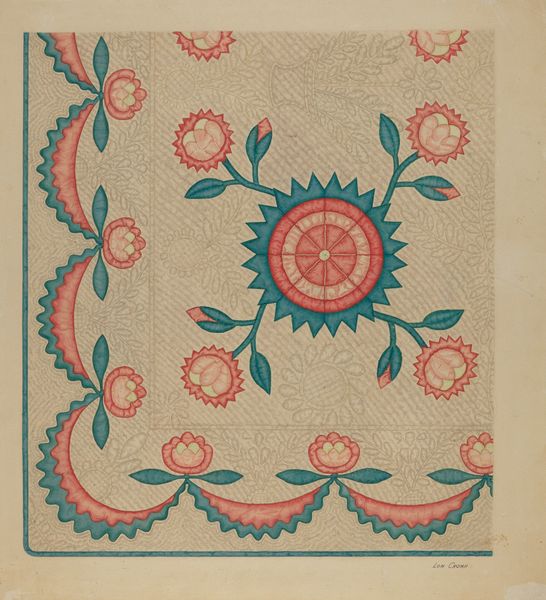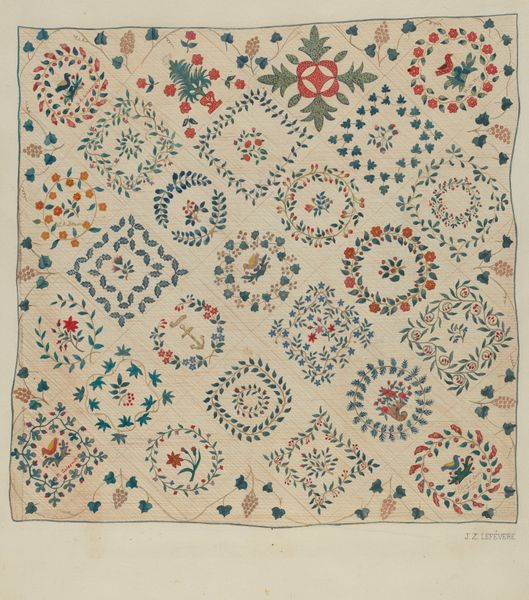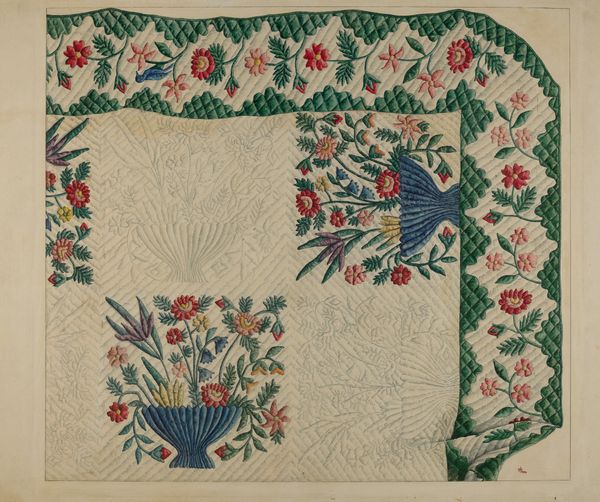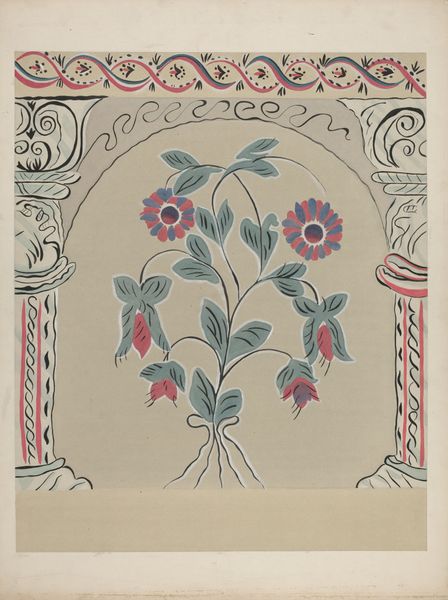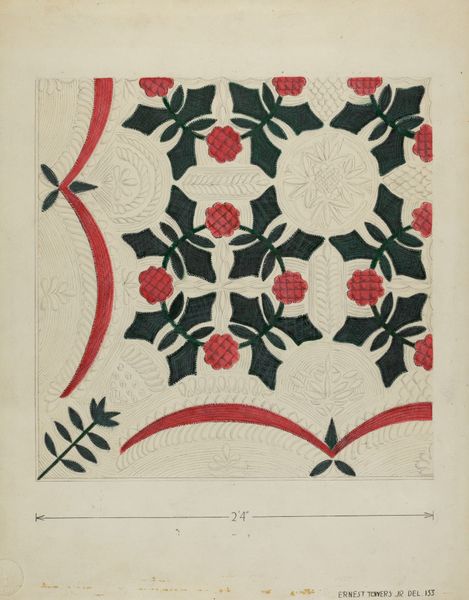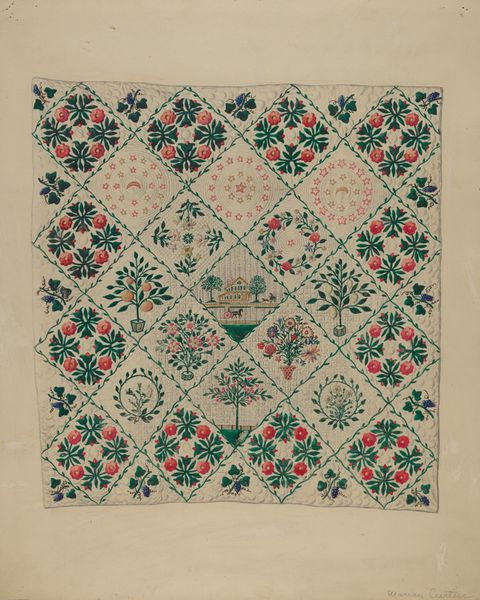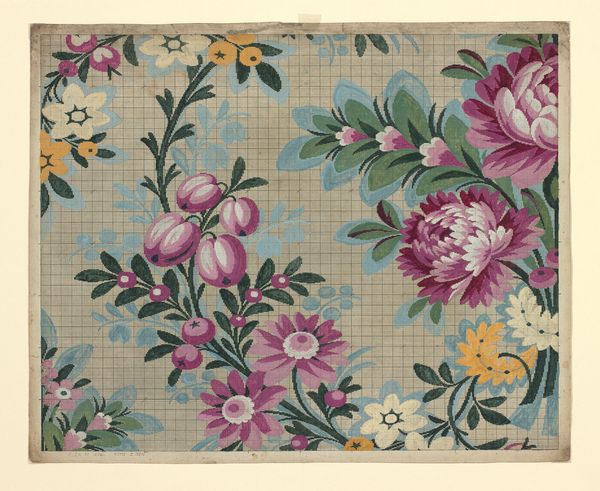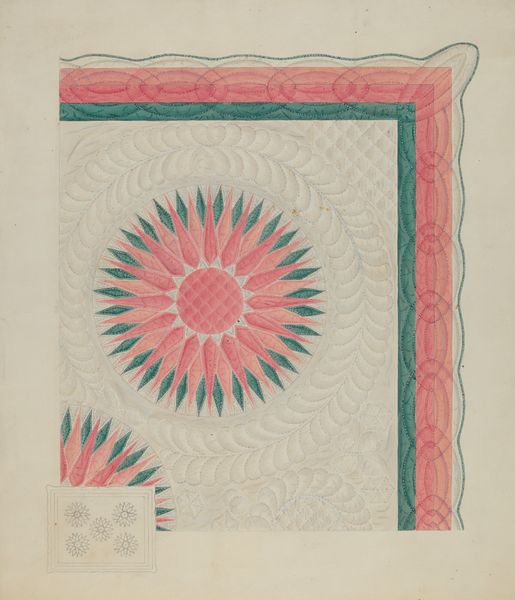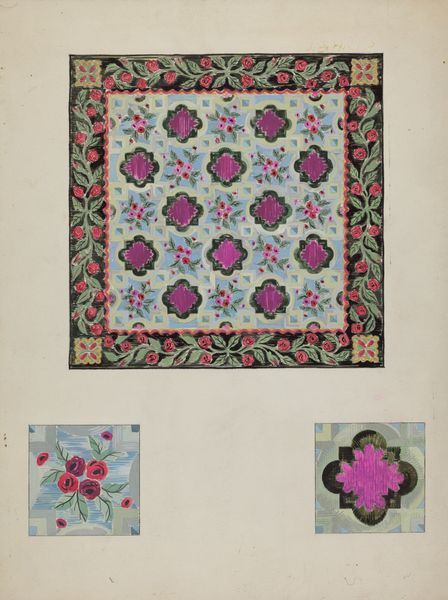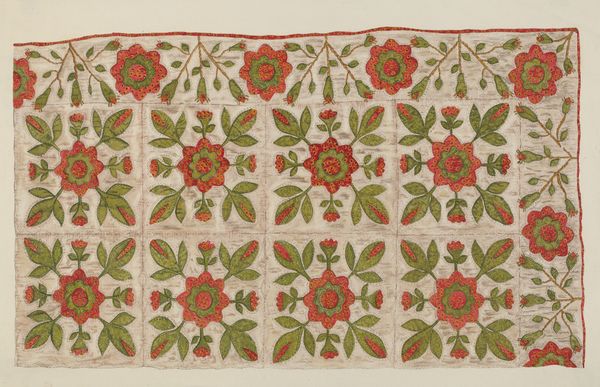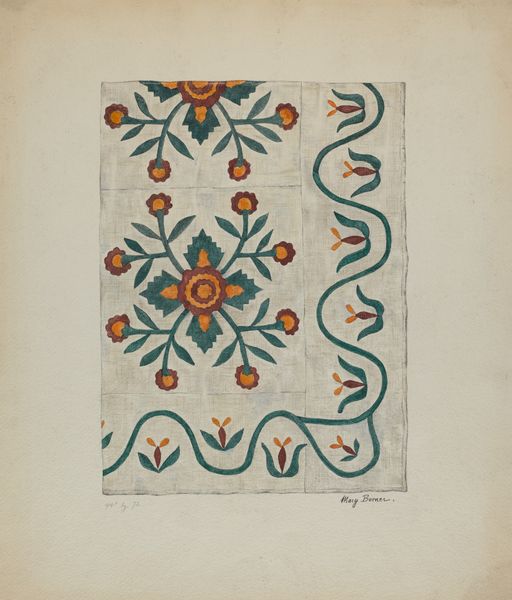
paper, watercolor
#
paper
#
watercolor
#
geometric
Dimensions: overall: 29.2 x 35.2 cm (11 1/2 x 13 7/8 in.) Original IAD Object: 88" wide; 144" long
Copyright: National Gallery of Art: CC0 1.0
Curator: This work, “Patchwork Quilt,” was created between 1935 and 1942 by Ella Josephine Sterling. She used watercolor and mixed media on paper to realize it. Editor: Immediately, I’m struck by its almost clinical depiction of a familiar domestic craft. The coolness of the rendering almost betrays the warmth usually associated with quilts. Curator: I see that contrast too. Quilts are so deeply embedded in ideas around domesticity, women’s work, and communal creation. To render one with such precise geometry in watercolor really reframes that context. We should remember that quilts often served as vital historical records for women, telling stories through coded fabrics and patterns. Sterling might be playing with these traditions, offering a new way to view this very functional art. Editor: Absolutely. And notice the motifs she employs. There are floral designs alongside geometric abstractions, forming a rather rigid grid, almost like an encoded message, isn’t it? Are the individual shapes referencing distinct narratives? Are the flower images more specifically intended as representations of womanhood or motherhood, given historical precedents? Curator: Possibly, but perhaps more importantly is what this means for the cultural implications for marginalized women in this country at this time? Was she intentionally mirroring traditional Euro-American quilting patterns, perhaps critiquing those traditions, given the African influence in American quilting practices? The stark rendering coupled with recognizable patterning seems to engage those debates about cultural inheritance. Editor: That's a compelling point about Sterling's engagement with established European designs. Perhaps by rendering this image in a different manner—watercolor and mixed media on paper rather than fabric—it forces us to look closer at its cultural associations and hidden messages? And this opens into an opportunity for contemporary reassessment about identity, gender, and material culture? Curator: Precisely. The labor inherent in traditional quilt-making gets a layer of abstraction and commentary here. In focusing on visual representation rather than the tactile experience, Sterling pushes the quilt into the realm of critical cultural object. Editor: I'll never look at a quilt the same way. Thank you for opening it up to all these new avenues. Curator: The dialogue surrounding it—socially, culturally, aesthetically—becomes far richer with our deeper look.
Comments
No comments
Be the first to comment and join the conversation on the ultimate creative platform.

